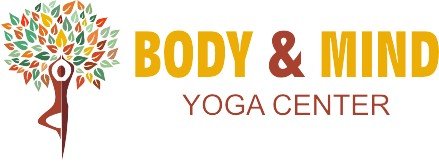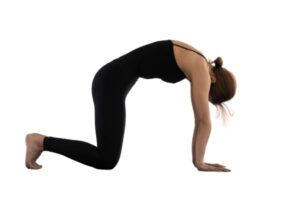Pregnancy is a transformative journey, and as your body prepares for labor and delivery, staying active and centered becomes essential. Prenatal yoga offers more than just gentle stretches—it builds strength, improves flexibility, eases common pregnancy discomforts, and helps you connect with your breath and baby. Whether you’re a first-time mom or experienced parent, prenatal yoga equips you physically, mentally, and emotionally to face childbirth with confidence, calm, and resilience. Ready to discover how? Let’s dive in.
Why is Prenatal Yoga important for Labour Preparation?
As your due date approaches, preparing your body and mind for labor becomes just as important as packing your hospital bag. Prenatal yoga is more than a fitness routine—it’s a holistic approach to building strength, enhancing flexibility, and fostering mental calm. From improving posture to mastering breath control, prenatal yoga empowers you to handle labor with greater ease and confidence. Discover why this gentle yet powerful practice is essential for every expectant mother.
Builds Strength and Endurance
Labor can be physically demanding, often lasting several hours. Prenatal yoga strengthens key muscle groups—especially the legs, back, hips, and core—to help support your changing body and improve stamina. This strength not only aids in carrying extra pregnancy weight more comfortably but also prepares you for the intensity and duration of labor.
Improves Pelvic Floor Support
A strong and flexible pelvic floor is crucial during labor and delivery. Prenatal yoga includes specific poses and breathing techniques that help engage and strengthen these deep muscles. This leads to better control during pushing and can reduce the risk of complications or long-term issues like incontinence post-birth.
Promotes Better Balance and Flexibility
As your body grows and your center of gravity shifts, maintaining balance becomes more challenging. Prenatal yoga enhances body awareness and improves coordination, helping you move more safely and confidently. Increased flexibility in the hips, pelvis, and spine also allows for a smoother birthing process, as the body becomes more open and responsive to labor positions.
Read More: 10 Prenatal Yoga Poses For First Trimester Of Pregnancy
Physical Benefits of Prenatal Yoga for Childbirth
Eases Common Pregnancy Discomforts
From lower back pain and swollen ankles to hip tightness and sciatica, pregnancy often comes with physical discomforts. Prenatal yoga offers gentle stretches and movements designed to relieve tension, reduce inflammation, and promote circulation—helping you feel more comfortable and mobile as your body changes.
Helps Maintain Healthy Posture
As your belly grows, your posture naturally shifts, which can lead to back and neck pain. Prenatal yoga strengthens your core and back muscles, supporting better alignment and reducing strain. This not only promotes comfort during pregnancy but also supports a smoother labor experience by aligning the spine and pelvis.
Assists in Optimal Baby Positioning
Certain yoga poses encourage your baby to settle into the ideal head-down, forward-facing position for birth. Movements that open the hips and loosen tight ligaments around the pelvis can create more space for your baby to rotate naturally—potentially leading to an easier, faster labor.
Read More: 11 Yoga Poses For PCOS And Hormonal Imbalance
Prenatal Yoga Poses to Prepare for Labor and Delivery
Cat-Cow Pose (Chakravakasana)
This gentle flow between two poses helps increase spinal flexibility and ease tension in the lower back—common during pregnancy. It also promotes mobility in the pelvis and encourages your baby into an optimal position for birth. This pose can help you tune into your breath and body, making it a great warm-up.
How to do it:
- Start on all fours with hands under shoulders and knees under hips.
- Inhale as you arch your back, lift your head and tailbone (Cow Pose).
- Exhale as you round your spine and tuck your chin (Cat Pose).
- Flow slowly with your breath, alternating between cat and cow.
- Repeat for 5–10 rounds.
Child’s Pose (Balasana)
A deeply restful pose that soothes the nervous system and gently stretches the back, hips, and thighs. It’s ideal for calming the mind and relieving lower back discomfort. In pregnancy, it offers a safe space to rest while still maintaining awareness of the breath and body.
How to do it:
- Kneel on your mat with big toes touching and knees wide apart.
- Sit back onto your heels and slowly fold forward.
- Stretch your arms out in front or rest them beside your body.
- Rest your forehead on the mat or a cushion for support.
- Stay here for 30 seconds to 2 minutes, breathing deeply.
Standing Side Stretch (Ardha Kati Chakrasana)
This pose lengthens the sides of the torso, stretches the spine, and improves breathing capacity—especially helpful as your belly grows. It also supports better balance and posture. Regular practice can relieve tension in the waist and ribs, making it easier to breathe and move comfortably.
How to do it:
- Stand tall with feet hip-width apart.
- Inhale and raise your right arm overhead.
- Exhale and bend gently to the left, keeping both feet grounded.
- Feel the stretch along the side of your body.
- Inhale to return, then switch sides.
Read More: Top 5 Postnatal Yoga Poses For C Section Recovery
Bound Angle Pose (Baddha Konasana)
This seated hip-opening pose is excellent for improving flexibility in the groin and inner thighs. It promotes healthy circulation in the pelvic region and encourages an open, relaxed pelvis for childbirth. It’s also a calming posture that helps reduce stress and fatigue.
How to do it:
- Sit on the mat with legs extended in front.
- Bend your knees and bring the soles of your feet together.
- Hold your feet or ankles gently with your hands.
- Allow your knees to relax toward the ground.
- Sit tall and breathe deeply for 1–2 minutes.
Yoga Squat (Malasana)
This deep squat helps open the hips, stretch the pelvic floor, and strengthen the legs—making it one of the best poses for labor prep. It encourages the baby to move down into the pelvis, supporting a more efficient labor. It’s also great for relieving tightness in the lower back and inner thighs.
How to do it:
- Stand with feet wider than hips, toes turned out slightly.
- Bend your knees and lower into a squat, keeping heels grounded.
- Bring your palms together in a prayer position at your chest.
- Press your elbows into your thighs to deepen the stretch.
- Hold for several breaths, then slowly rise.
Prenatal Yoga Is a Game-Changer for Labor and Delivery
Prenatal yoga is more than just gentle movement—it’s a powerful tool to prepare your body and mind for the journey of labor and childbirth. By enhancing strength, flexibility, and mental focus, it equips you with the resilience and calm needed during one of life’s most transformative experiences. Whether you’re a first-time mom or adding to your growing family, incorporating prenatal yoga into your routine can lead to a more confident, connected, and empowered birth experience.
Join us at Body and Mind Yoga Center, where our specialized prenatal yoga classes in Dubai provide a nurturing environment for mothers-to-be to connect with their bodies and their growing babies.







